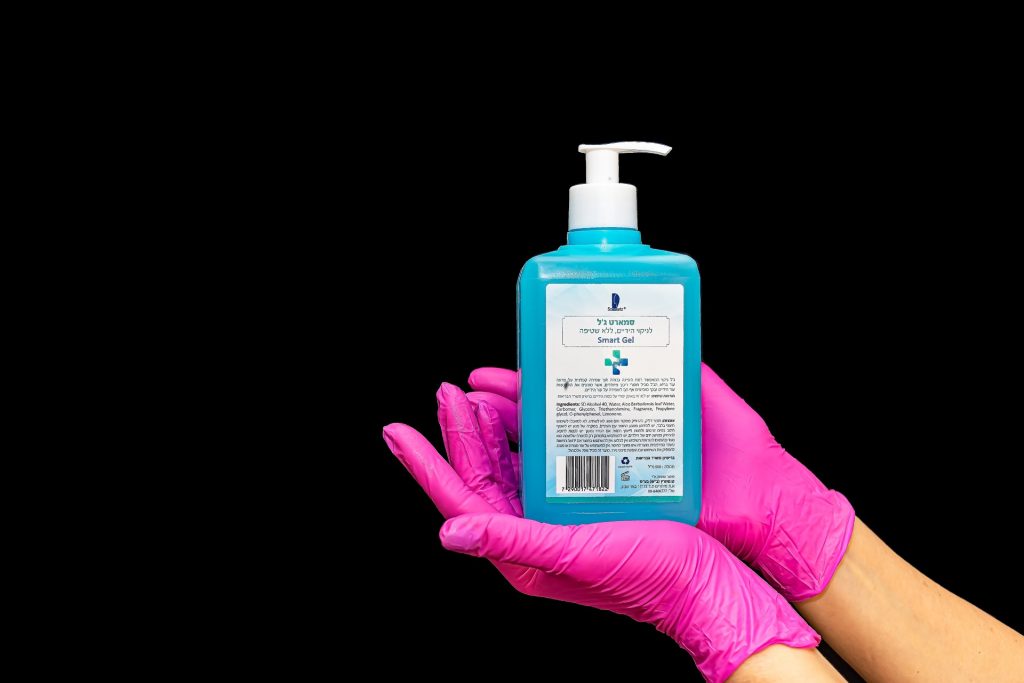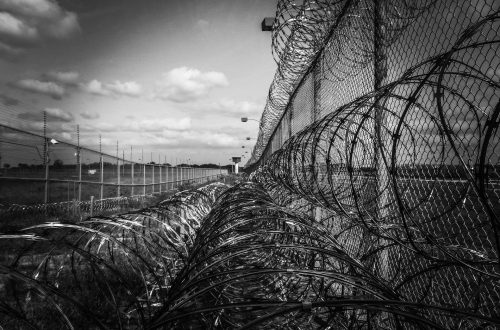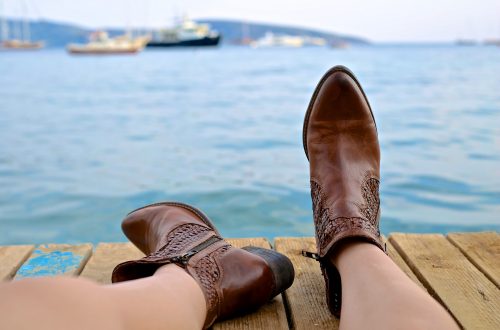
The Problems with Going Back to School During a Global Pandemic
Fair warning: this is going to be a rant post. This topic is very close to me because it directly affects me as a public school teacher. I am getting tired of having politicians make decisions about what happens in the fall without having any teacher input. So here’s my opinion on the matter.
A Little Background
As everyone is well aware, we are in the middle of a global pandemic. COVID-19 is a virus that has spread to countries all over the world, causing nationwide shutdowns and quarantines.
Back in March, I helped stuff backpacks with worksheets, books, Chromebooks (that the district lent to families for distance learning) and waved goodbye to my students for the last time–though I didn’t know it at the time.
Then, teachers were expected to take everything they knew about teaching and to throw it out the window. We had to learn how to take all of our instruction and transition it to an online setting. Luckily, my district took our calamity days so we had a week to figure it out, but that’s a lot less time than the four years we had to learn while in college. Some districts didn’t even have that extra time to plan.
I’m not complaining about this part because I did it for my students–not for anyone else. It was exhausting and stressful, but I would do it again for them. I love my students and they are the only reason that I am still teaching today. Teacher burnout is real, folks.

Distance Learning
During this time, I felt like educators were starting to get recognition for the hard work that we do everyday. Parents were starting to see what their child acts like in class (that was my favorite part of distance learning), and they realize just how hard it is to work with kids at different levels (with kids in different grades, it was hard to help everyone).
I feel like virtual learning was difficult for everyone, but it brought me so much closer with my students and their parents. It was truly a team effort, and we learned together.
It broke my heart when I had to hang up that last Zoom class meeting. We didn’t get to have our end-of-year party. We didn’t get to have field day or go on our end-of-year field trips. I didn’t get to show my fourth graders which school they would be going to next year and introduce them to their new teachers. I didn’t get to hug them goodbye. It was devastating.
The Point
What I’m trying to say is that I love my students and I want nothing more than to get back to “normal” and see all of my students everyday at school. I miss morning meetings and getting to have fun with my students.
I get why parents and teachers want to go back to school–I’m not here to tell them that they’re wrong. Kids aren’t getting enough socializing at home, and nowhere near the kind of education they would be getting in person.
To me, the negative effects of going back to school too soon outweigh the positive effects. I believe that returning to school too soon is a horrible mistake that could cost lives.
Reopening Plan
As of right now, there is not a solid reopening plan for schools in Ohio. Administration is deciding between all in-person learning, virtual learning, or a blended approach. I believe that administration would have done what is right (or try to), but recently I’m not so sure.
President Trump threatened that if schools do not reopen in person in the fall, that they will cut funding for the schools. What does this teach kids? It teaches them to threaten to get what you want, even if it’s not what is best for everyone. It makes me furious.
If schools go back in the fall, staff and students (my kids will be included in this since they are old enough) must wear masks and socially distance. We were instructed to wash our hands and to clean as much as possible.

It Won’t Work
The more I thought about it, the more reasons I thought of that make me think it will not work.
1. Classroom Management
Have you ever been in a classroom with 26 kids? Do kids EVER stay away from each other when you tell them to? I’ve had issues keeping students apart in the past–and more often than not, they don’t even like each other. I’m imagining the reunion between friends–remember they haven’t seen each other in months–hugging each other. I’m imagining kids reuniting with their teachers from last year. They never got to say proper goodbyes, so they’ll be excited to see each other.
I’m imagining face masks being used for everything BUT a face mask. Kids get creative too. I can see them being used as blindfolds, headbands, toys, and slingshots.
For any non-teacher readers, a lot of classroom management is physical. It could be proximity to the students, it could be a gentle touch on the shoulder to get the student’s attention, it could be taking away a physical distraction (a toy, paper, pencil). How am I supposed to do that without getting too close to students?
2. Class Sizes
As I mentioned above, I can have up to 26 kids in my class. Without social distancing, this can be difficult. Especially as the kids get older and grow. How am I supposed to take a classroom that barely fits a full class without socially distancing, and put their desks six feet apart? Are they constructing hundreds of football fields so we can do that?
3. Arrival/Departure
A lot of kids come to school on a bus. Students could be crammed with three kids per seat, and that’s if all of the buses are working properly. Buses sometimes have to stop to get students from other buses when they break down on the side of the road.
Districts like mine are too big to do multiple rounds of pickups, and with budget cuts there isn’t enough money to buy more buses and pay more bus drivers. So, parents will have to decide between driving their kids to school (if they have the means to) and risk sending their kids on the bus.
After the buses get to school, kids filter in through a few doors and go through the cafeteria to get breakfast. Even if they don’t stay in the cafeteria, there are hundreds of kids going through the same room within the span of a half hour. If they didn’t come into contact on the bus, they have another opportunity to here.
The students will probably be spending the whole day in the classroom, so there are even more people that will be exposed. They stay in the room all day, then reverse the arrival and you have hundreds of opportunities to come in contact with the virus.
Socially distancing isn’t possible within the classroom, but it’s even less possible with arrival and dismissal.

4. Quarantining Cases
Aside from the fact that staying in the classroom the whole day will not prevent school-wide spread of the virus, if a classroom is exposed to the virus, those students would have to stay home for 14 days to self-quarantine.
Who is reinforcing the quarantine? Does that mean the whole family has to quarantine? Does that include siblings in other classrooms? Will those classes also have to quarantine? Are teachers supposed to switch back and forth between in-person and virtual learning?
I don’t understand the logistics of the rules on quarantining, especially knowing that there are so many families with siblings in different grades throughout the school.
5. Substitutes
Say a teacher has to quarantine for some reason. There are not enough substitutes to go around as it is, and students are often split between the other classrooms. With there being up to 26 students in the rooms already, why not add six more?
When quarantining, you have to stay home for 14 days. It’s difficult to find a sub for one day, and even then if a teacher in a younger grade is out you might lose your sub to them. It’s easier to split the older kids up instead of the younger kids, but then the older kids lose a lot of learning.
6. Mask Refusal
I know of multiple people who are able to, yet they refuse to wear a mask. If parents are refusing to wear masks or to send their kids with masks, are teachers supposed to provide them with masks at school? Are we able to force them to wear masks?
If we allow students to choose whether or not they wear a mask, no one will wear one. And as I have already stated, we can’t appropriately social distance in a typical classroom with the amount of kids in the room. How do we enforce the mask rule if some kids are exempt from it?
7. People At Risk
Luckily, I do not have any kids of my own yet and I only live with my husband. I would like to know what educators are supposed to do if they live with an elderly family member or if they are more at risk themselves.
What about the kids? Several students that I had last year either lived with a sick family member or had grandparents helping to raise them. All of those opportunities to come in contact with the virus are now being taken home to them.
8. Funding for Cleaning Supplies
There are teachers that I know who have to buy their own paper to make copies of worksheets for their students. I find it really hard to believe that we will be getting any funding for cleaning supplies, masks, or gloves to keep ourselves or our kids safe. Where are those supplies going to come from? Teachers already spend hundreds on supplies for their students, are we expected to spend more now?

9. Mental Health
Mental health is something that is extremely important to me. My whole teaching career has been working with students in low-income schools. Students have a lot more to worry about than people think, especially when you didn’t have the same concerns when you were a kid.
I’ve had students with parents who got deported, students who have recently lost a family member, students who didn’t have enough food at home unless the school sent them some, or even students who might not know which family member’s house they were staying that night.
School was always their safe place, and that made me sad for the closures. What the students need are a sense of routine, and some consistency. When schools are open, closed, half-opened, then opened again, it makes it difficult to have that consistency. I think that providing stability through distance learning until COVID is under control is the best way to support kids.
The anxiety that will be there constantly if we go back will inhibit their learning. When students are distracted, they aren’t learning. They will be thinking about staying away from kids (after getting yelled at several times), washing their hands, wearing their masks correctly, and taking the germs home with them.
All of that, however, will come after they realize that school is going to be very different. That’s just student mental health. I don’t know a single educator or staff member that isn’t anxious about going back.
10. Not “Back to Normal”
One of the biggest arguments that I see about sending the kids back to school is to “get back to normal”. There is not going to be anything normal about going back to school during a pandemic.
Everyone is going to wear face masks, which is going to inhibit learning itself. Teachers are going to be on edge and yelling at kids who get too close together–after all, we will be held responsible when there is inevitably an outbreak. There won’t be much socializing with anyone outside of the classroom (except arrival and dismissal).
Students aren’t going to be able to play with their friends like they could before. They’ll be discouraged from interacting as much as possible, which doesn’t solve the socializing factor.
I like to teach with partner work, group work, and class projects. All of these aren’t going to be able to happen until we actually get back to “normal”. Teachers are going to have to change their teaching approach for a second time this year, and it’s exhausting.
The Takeaway
Sending kids back to school against the opinions of several experts is teaching kids that you don’t have to listen to the experts. It’s teaching them that this pandemic is no big deal or that it’s over. It’s teaching them the opposite of what I would be telling my students.
I miss school, I miss teaching, but most of all I miss my kids. Because I love my kids, I find it horrifying that we are even considering putting them and their families at risk because some politicians want things to go back to “normal”. This is not okay, and I am so saddened that people are even debating it right now.
Learn More
If you want to know more about school re-openings, here are a few links here: New York Times, The Washington Post, EdSurge, CNN, Medical Express. I stated my opinion above, but I encourage you to do some reading of your own to formulate your own opinion. Happy learning!





